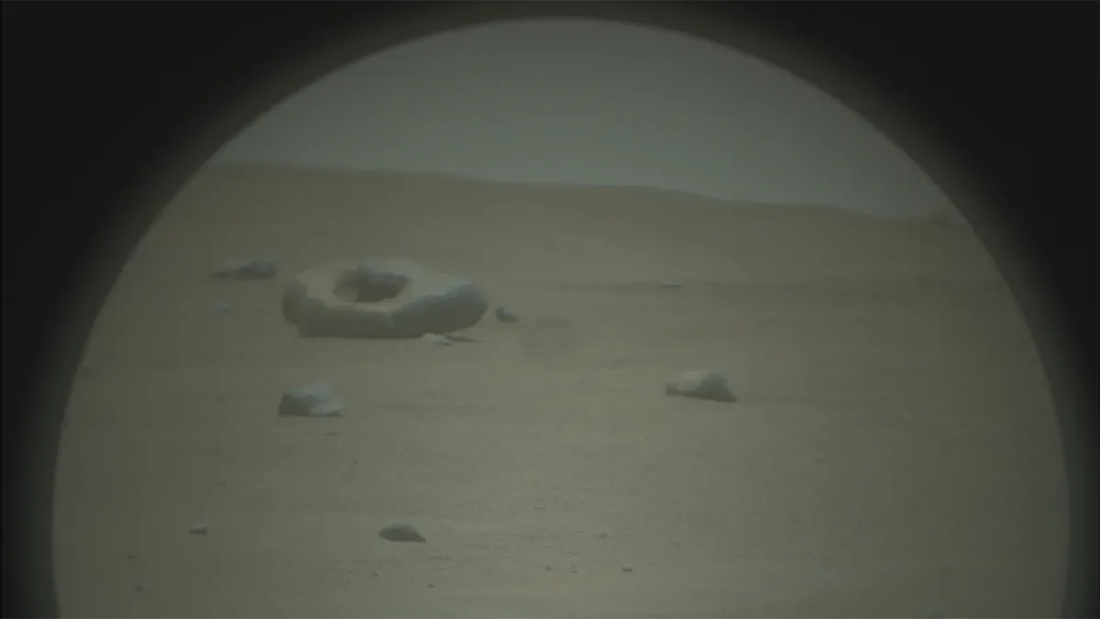Every now and then, the robots we’ve sent to Mars stumble across an interesting rock formation on their journeys across the surface.
Occasionally – as you’d expect when studying the geology of a whole other planet – it is something really interesting. In June, for example, the Mars Perseverance rover snapped several images of a large, donut-shaped rock.

Raw images from Perseverance showing the donut-shaped rock.
Image credit: NASA/JPL-Caltech/LANL/CNES/IRAP
The rock, beyond looking delicious, is unusual against the Martian landscape, leading the Search for Extraterrestrial Intelligence (SETI) Institute to suggest it could be “a large meteorite alongside smaller pieces”.
As well as these cool finds, the rovers also stumble across lots of not-so-interesting rocks, which happen to look like objects from Earth, from bones and a doorway, to fossilized snake heads. The latest to add to this list is a giant “shark fin” and a “crab claw”.
So, is it time to bow down to our Martian crab-shark overlords and beg for their mercy? Not quite yet.
The phenomenon of seeing familiar patterns in objects, like a crab claw when you are looking at a rock, is called pareidolia. In terms of our evolution, it makes sense that we spot patterns that could be a danger to us (e.g. a snake or a hungry bear) as quickly as we possibly can.
Carl Sagan theorized that the ability to identify threats was imperative to our survival. Early humans that ran away from what they thought to be a lion hiding in the shrub survived. Those who couldn’t spot this lion “pattern” would be eaten by it. And if they ran away but it turned out that the lion was in fact just a rock, that’s fine; those humans survived either way and passed on their genes.
Sagan suggested that finding patterns (where patterns exist or not) was a vital precautionary survival skill, but could lead to the misinterpretation of random images or patterns of light as faces and familiar objects. Such as looking at a rock on Mars and thinking we’ve found a crab planet.
[H/T: Space.com]
Source Link: Crab Sharks On Mars? Perseverance Rover Snaps Unusual Photos Of The Red Planet